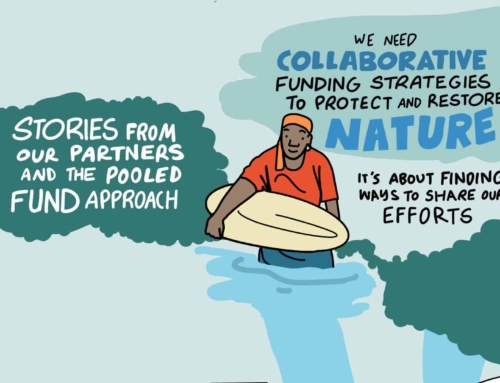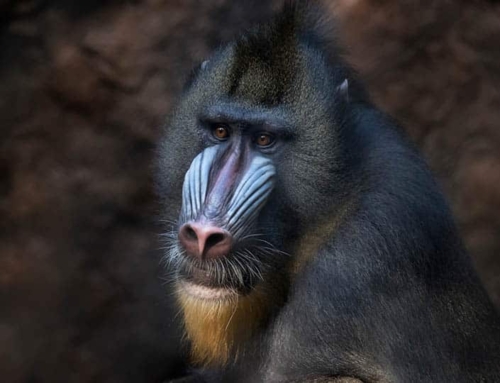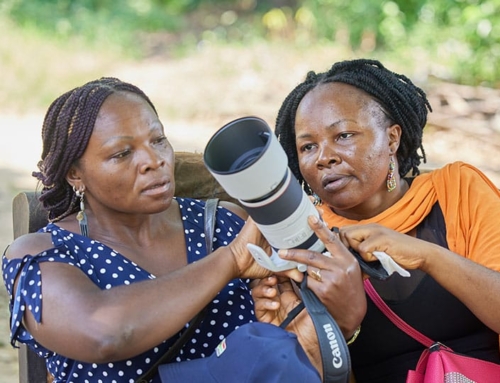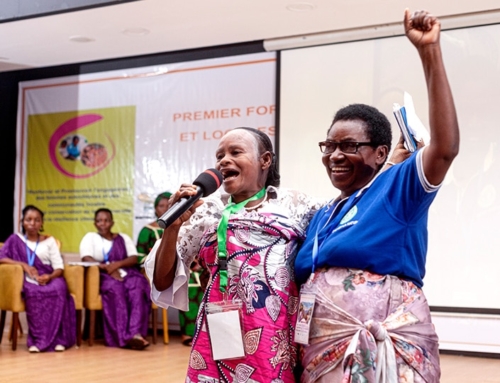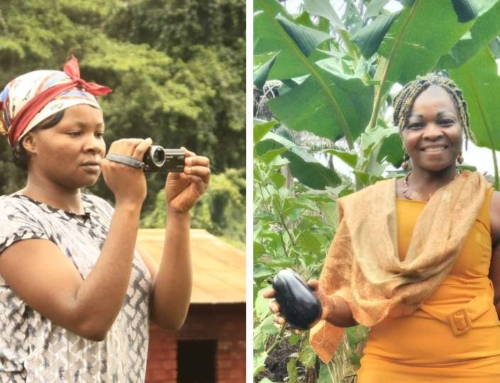With the UN Convention on Biological Diversity’s new agreement dominating conservation headlines, it can be easy to lose sight of the people working every day to protect our planet’s biodiversity on the ground.
However, throughout 2022, our partners restored ecosystems, protected endangered species, and collaborated with Indigenous Peoples and local communities to build a better future for all life on earth. Their stories may not always make the front page, but we’re thrilled to share a few of them with you.
Two new mothers come together to protect amphibians in Brazil’s unique Espinhaço Mountains
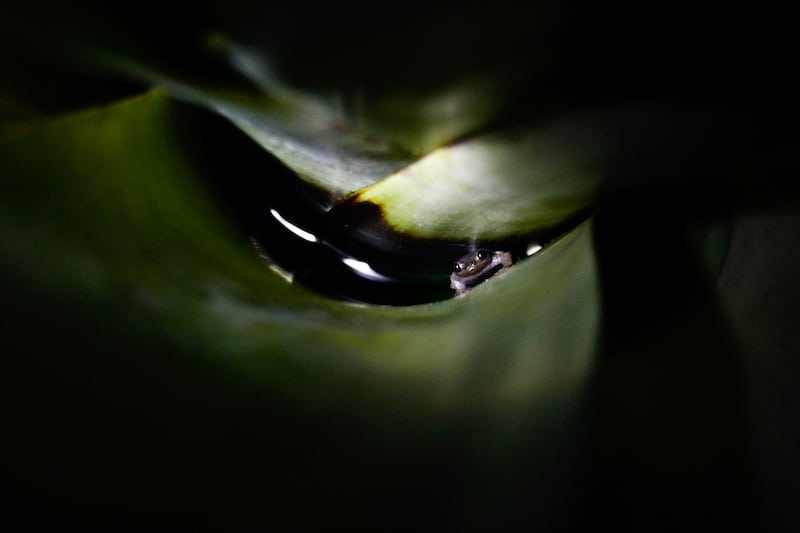
Crossodactylodes peers out from its bromeliad home. Image © Daniela Barcelos.
The highest reaches of Brazil’s Espinhaço mountains are home to an entirely unique ecosystem. More than a quarter of the amphibians who live in these alpine peaks can be found nowhere else on earth. When our partner Instituto Biotrópicos kickstarted their Amphibian Programme, they chose to focus on Crossodactylodes: a group of tiny, bromeliad-dwelling frogs.
Project leader Izabela Barata is an expert on the genus. When she took maternity leave earlier this year, the flexibility of our funding enabled her to hire a fire management expert, Elisa Paschoal, to study the impacts of fire on the bromeliad frogs’ native landscape. Elisa also happened to be a new mother, with this being her first role following her own maternity leave. Her research revealed that major fires caused by arson were a serious threat to the species. However, she also found that careful, proscribed burns could protect the ecosystem by reducing the ferocity of fires caused by arson.
Now, Izabela and Elisa are working with local people to learn how they view their relationships with the environment, and how they use and understand fire. Elisa’s findings proved that proscribed burns could help to protect bromeliad frogs and their extraordinary ecosystem. With the support of local communities and Indigenous Peoples, Instituto Biotrópicos will be able to translate her research into conservation action.
This year, Izabela and Elisa also trained two park rangers in amphibian monitoring, and established two monitoring programmes in the mountain range. These new programmes will help Instituto Biotrópicos gather in-depth knowledge of where the frogs live and how they relate to the broader ecosystem. That knowledge can then inform management guides for the conservation area, to ensure bromeliad frogs survive and thrive.
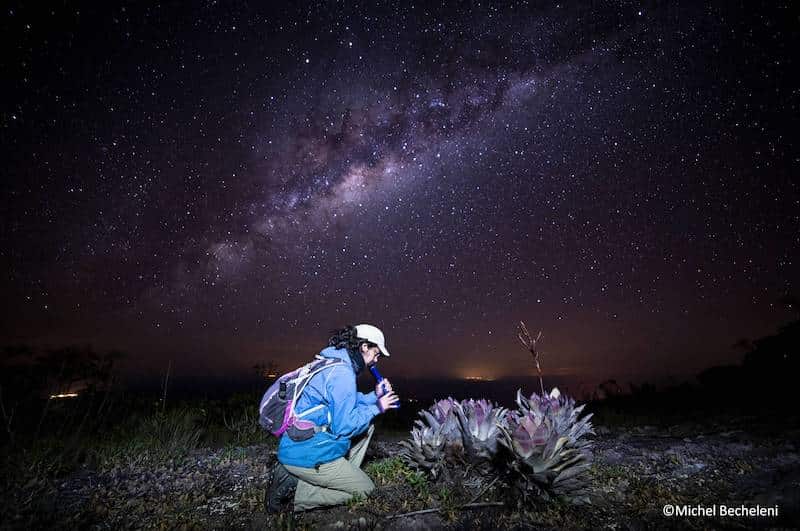
Izabela looks for frogs in Espinhaço’s high-altitude bromeliads. Image: © Michel Becheleni.
A growing movement seeks to prevent the largest hydroelectric project in the world
Recent years have seen a major push for energy development in the Democratic Republic of the Congo. Most famously, the planned Inga 3 Dam would be the largest hydroelectric project in the world. Should the project go ahead, it would prove extremely destructive to both freshwater species and local communities.
The dam will displace an estimated 37,000 people, while 90 per cent of the Congolese population will have no access to the energy it generates.
It will also prove catastrophic for fish populations in the Congo river, and encourage deforestation in the Congo Basin—harming biodiversity while impoverishing communities who rely on these ecosystems.
Local opposition to Inga 3 and exploitative energy policy is gaining momentum. This year, we provided our first grant to CORAP (Coalition of Civil Society Organisations for the Monitoring of Reforms and Public Action). The funding enabled them to publish their own vision for the Congolese energy sector. The policy proposal puts people and planet first by promoting truly renewable energies, decentralised infrastructures, local development, and the empowerment of women through job creation in the energy sector.
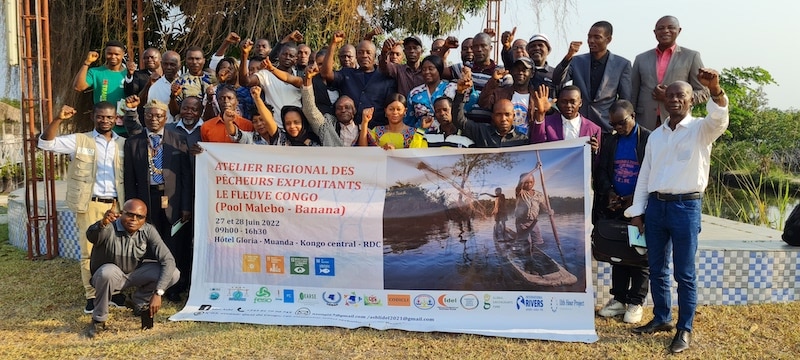
Local fishermen unite to oppose the exploitation of the Congo river. Image: © CORAP.
Since laying out their vision for a more just energy future, CORAP have been building popular support. They visited local communities to raise awareness about who the Inga 3 Dam really serves and organised a 600-person march against current energy policy. Afterwards, they were received by the Minister of Energy to discuss the government’s plans to improve energy access for Congolese people.
In the coming months, CORAP will continue building relationships with local communities while advising energy policy for the government of the DRC.
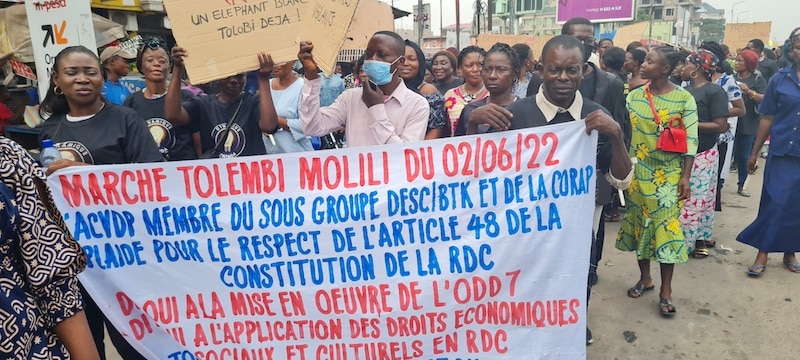
Protestors in Kinshasa call for just and sustainable energy policy. The movement calls itself ‘Tolembi Molili,’ which translates to ‘We are tired of living in the dark.’ Image © CORAP.
Indigenous craftspeople undertook river restoration project in Brazil’s super-diverse Pantanal
As part of a series of partner visits in March of this year, our affiliate Grace Souza met MUPAN (Women in Action in the Pantanal), a new Synchronicity Earth partner in our Biocultural Diversity Programme. The Pantanal is the world’s largest tropical wetland, spanning more than 42 million acres, and boasting the highest concentration of wildlife in South America. MUPAN is a woman-led alliance fighting to protect the Pantanal from a number of threats, including forest fires and overgrazing.
Unlike many Indigenous Peoples in Brazil, the Kadiwéu have retained extensive land rights. However, illegal loggers and land grabbers pose a threat to their cultural sovereignty. One major target of logging is the Pau Santo tree, which the IUCN now classifies as an endangered species. The Kadiwéu use Pau Santo resin to make black dye for their traditional ceramics, and in recent years they have struggled to find it.
This year, they partnered with MUPAN and the Federal University of Mato Grosso do Sul to create a Pau Santo nursery. The support and knowledge of the Indigenous people enabled the team to visit healthy communities of Pau Santo trees to collect seeds, roots, and cuttings while gaining a better understanding of how the trees grow in the wild. The new nursery ensures that the Kadiwéu are able to produce their traditional ceramics. It will also provide new knowledge about growing and propagating Pau Santo, thus informing restoration work in degraded areas of the Pantanal.
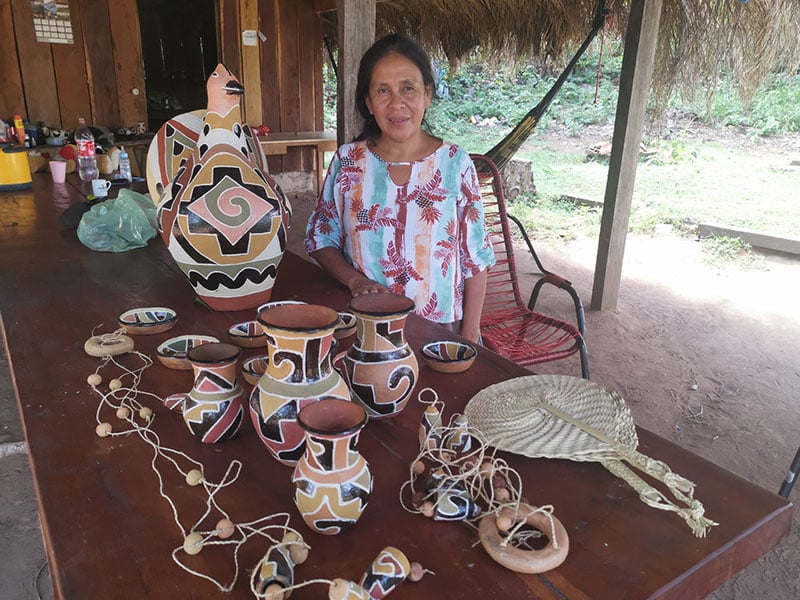
Kadiwéu woman with traditional pottery made with local clays. Image © Grace Souza.
Through this project, the Kadiwéu learned more about MUPAN’s work, and shared their challenges with a lack of water. Now, they are working together to protect upstream waters from grazing cattle, which will facilitate recovery of local streams. Despite the Kadiwéu’s understandable distrust of outside bodies, Grace witnessed a close, familial bond between them and MUPAN. By listening to Indigenous Peoples’ own priorities, MUPAN was not only able to restore a freshwater ecosystem to the benefit of biodiversity, but also to build a lasting relationship with the stewards of the land, enabling further collaboration in the future.
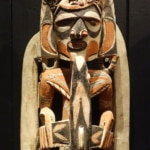
When Ailan Awareness was founded, only a few individuals still knew how to create the carvings. Image: Wikimedia Commons.
Keeping women’s ecological wisdom alive in Papua New Guinea
Western marine conservation has often sought to replace traditional fishing practices with methods devised by conservationists. However, when Papua New Guinea locals John Aini, Bernard Aini, and Michael Ladi noticed declining fish populations, they realised traditional fishing practices were precisely what their coral reefs needed. Together, they founded Ailan Awareness to ensure sustainable, Indigenous knowledge was passed down.
For example, the Indigenous Peoples of the land now known as New Ireland use poisonous derris root as a tool for fishing. Historically, only a few individuals in the community were allowed to use the root, which prevented it from damaging the coral reefs. As modernisation eroded traditional Indigenous knowledge, more and more people began using the root, which degraded the reef ecosystem. Ailan Awareness realised that restoring Indigenous knowledge would also restore the reef.
Today, Ailan Awareness has grown into a much wider campaign for cultural vitality and revitalisation in New Ireland. Along with Indigenous-based marine conservation plans and marine education programmes, they run the ‘Malagan Cultural Revitalisation Project,’ which supports traditional Malagan ceremonies. These ceremonies emphasise the interconnection between people, life on land, and the life of the sea.
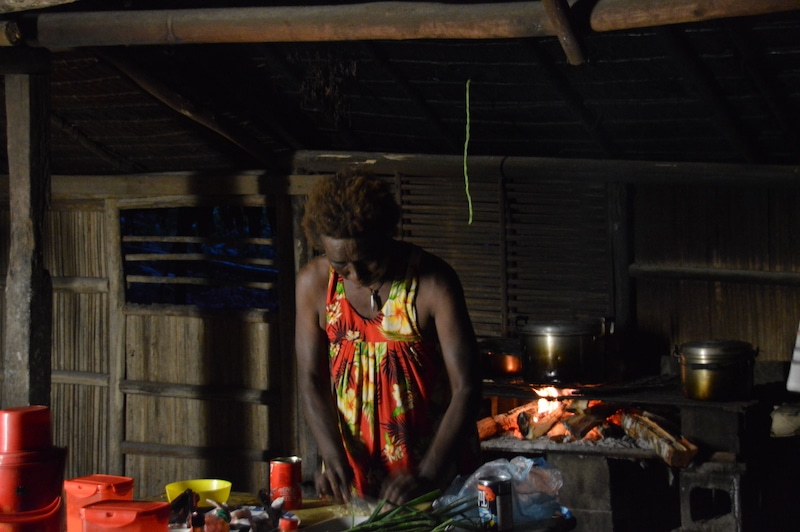
The Indigenous women of Papua New Guinea hold extensive knowledge about sustainable food systems. Image: Ailan Awareness.
Synchronicity Earth began supporting Ailan Awareness in 2021, as part of our Biocultural Diversity Programme. This year, we committed to another three years of funding. Our long-term commitment enables Ailan Awareness to plan for the future and focus on carrying out their work effectively, without having to waste time fundraising. The new grant will support the team’s work to conserve Indigenous women’s approaches to natural resource management. By bringing together older and younger women, they will ensure ecological wisdom, including knowledge about food crops and their cultural significance, continues to be passed down.
Improving diversity and inclusion in the environmental sector
The sustainability sector is the second least diverse in the UK, with only seven per cent of employees identifying as people of colour. With Black and brown communities being disproportionally affected by climate catastrophe and ecosystem degradation both globally and within the UK, it is more vital than ever that the environmental movement reflects the people put most at risk by unsustainable policy.
In 2021, Race for Nature’s Recovery (R4NR, a partnership between Action for Conservation, Generation Success, SOS-UK, and Voyage Youth) launched a new program to bring people from underrepresented groups into environmental organisations across the country. Using funding from the government’s Kickstart scheme, participating charities created six-month placements and chipped in to ensure pay met the local Living Wage. Synchronicity Earth’s Equality, Diversity, and Inclusion working group provided a small grant to R4NR to support the initiative.
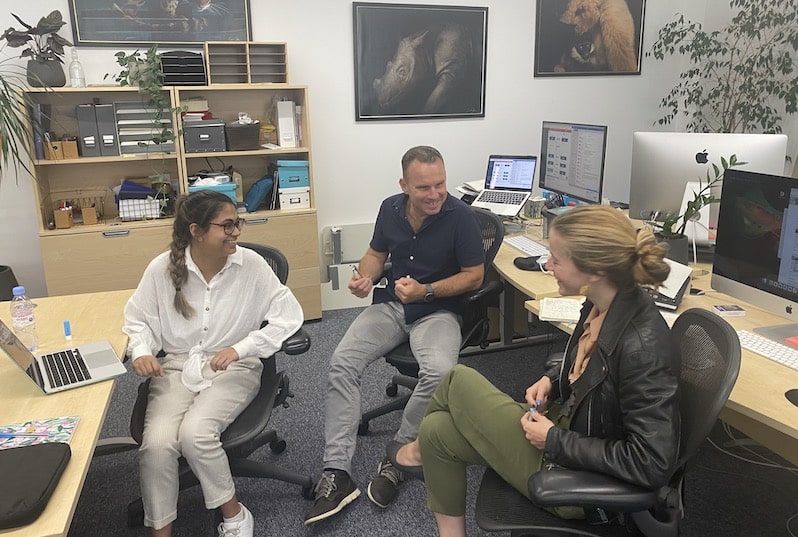
Synchronicity Earth’s communications team prepares for the week ahead. Reefah Chowdhury (left), Jim Pettiward (middle), and Nina Seale (right). Image: Synchronicity Earth.
By March of this year, Race for Nature’s Recovery successfully placed 125 young people from underrepresented groups into environmental organisations across the country. Here at Synchronicity Earth, we hired four interns from underrepresented backgrounds in two-week paid positions over the summer, one of whom was offered an extended internship. We also employed a Communications Assistant through R4NR, who now plans to pursue a career in environmental policy.

